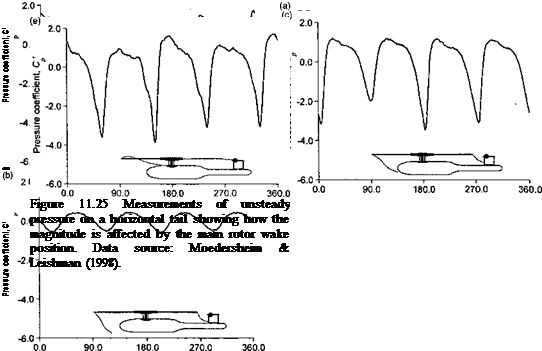Modeling of Rotor-Empennage Interactions
– Mathematical models have not yet evolved to the point where the aerodynamics of the empennage can be predicted without input from wind tunnel and/or flight tests.

Blade azimuth position (time), ^ – deg. Blade azimuth position (time), i)> – deg.
The capabilities of these methods are beyond the state of the art because of the need to model vortex-surface collisions, the cutting of vortex filaments, as well as the formation of 3-D unsteady separated flows. Gangwani (1982, 1983) has used a prescribed wake model coupled with a doublet-lattice model of a fixed wing to predict the unsteady bending moments produced on a helicopter tail. Reasonable correlation was obtained with flight measurements. Mello & Rand (1991) confirmed that the predicted unsteady airloads on the empennage were sensitive to the rotor wake position, simply confirming results of both wind tunnel measurements and flight test experience. Weinstock (1991) has developed a
parsimonious model of the rotor wake-empennage aerodynamic interaction problem for use in flight simulation modeling. Curtiss & Quackenbush (1989) considered in more detail how the induced velocity field of the rotor wake at the empennage location affects the helicopter’s stability derivatives. The limited correlations obtained with flight measurements reiterated the complexity of the main rotor wake-empennage interaction problem and the difficulties in constructing truly faithful models for use in flight mechanics simulations.











